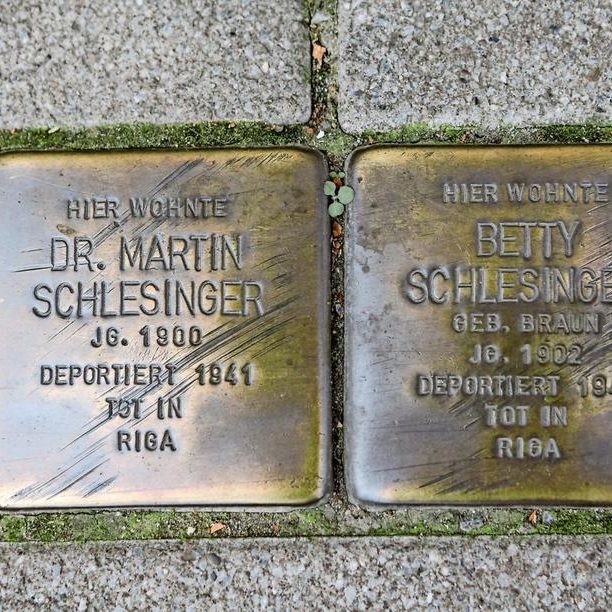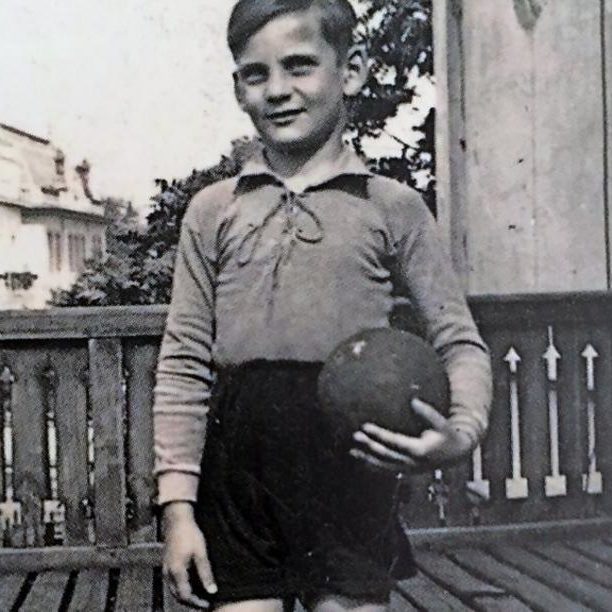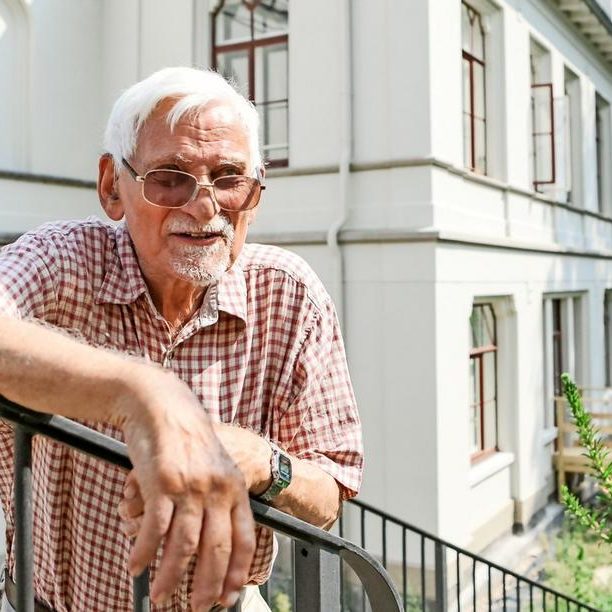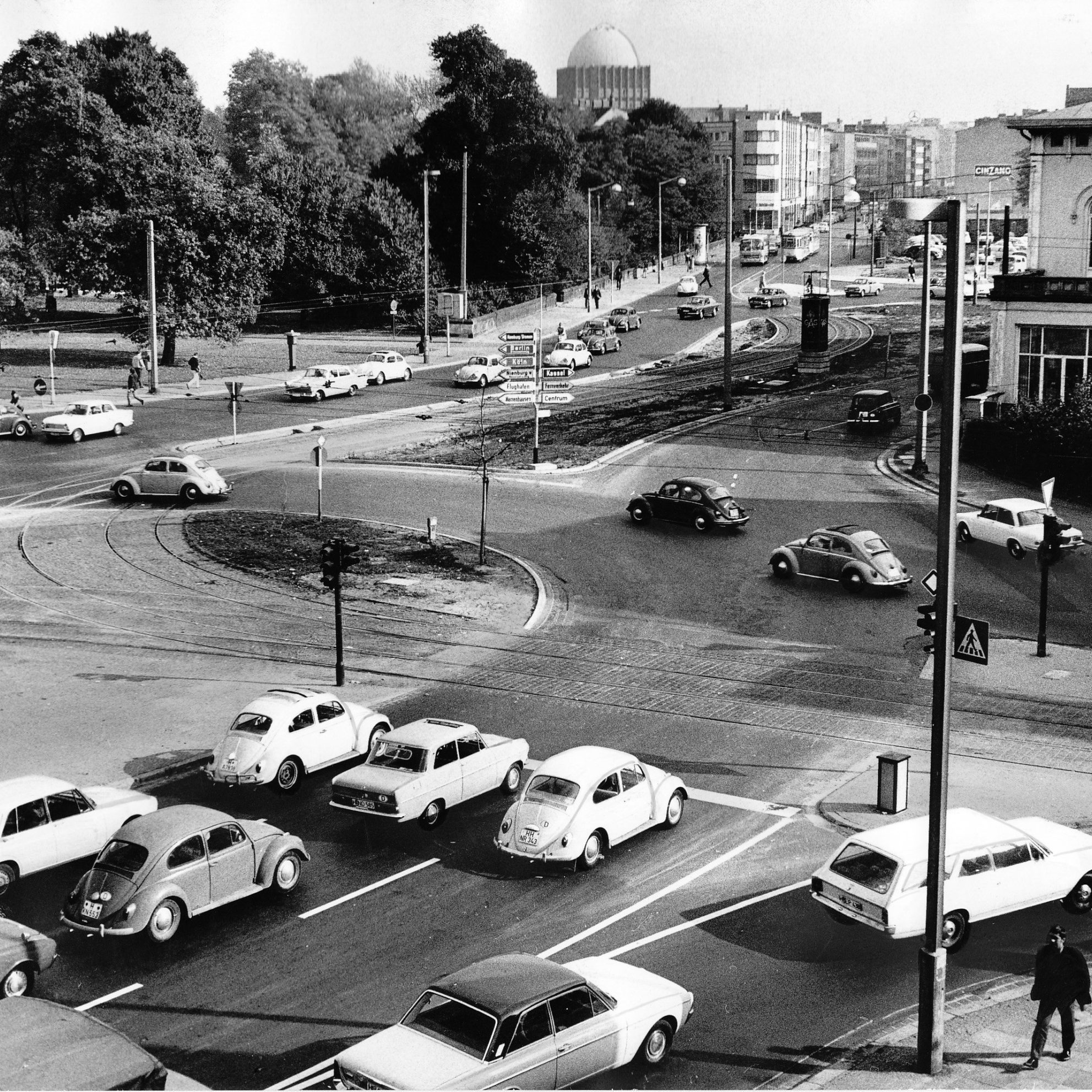Murderers and their victims. The story of two villas located on the same square. “Villa Simon” had belonged to the Jewish Berliner family of entrepreneurs since 1895. In 1941, it was acquired by the Hanover city authorities. Its Jewish occupants were deported. A few blocks away stood the villa housing SS-District IV, which constituted the regional headquarters of the SS [the abbreviation for “Schutzstaffel”, “Protection Squadron”].
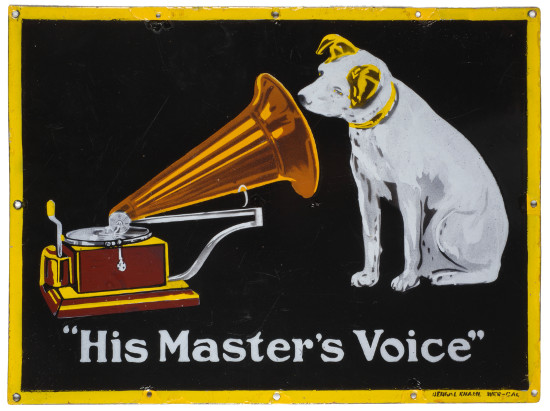
“Horst-Wessel-Platz”
Shortly after transfer of power to the National Socialists, Königsworther Platz is renamed Horst-Wessel-Platz. Horst Wessel was the SA [SA is the abbreviation of ‘Sturmabteilung’, literally ‘Storm Detachment’, the Nazis’ paramilitary wing, known as ‘Brownshirts’] leader from Berlin, purportedly murdered by members of the communist youth organisation, and elevated to status of “martyr of the movement”. A whole series of streets and squares are named after him in the Nazi era.
In the early morning of 1 May 1933, “Labour Day”, which the Nazis had made a national holiday, a “Horst-Wessel oak tree” is planted in the square. Protestant youth groups, such as the Christian Scouts, also take part in the ceremony after which they parade in a long procession through the city and in the afternoon organise games for the children and families at the zoo.
SS command headquarters
Opposite where today the university buildings (Conti Tower) are stands the prestigious villa of the Jewish industrialist family Sichel (“Sichel-Leim” in Limmer), on the western edge of the square. In 1936, the villa is purchased by the city and immediately rented to the SS. It is from this command headquarters of District IV on the night from the 9th to the 10th November 1938 that the events known as the “Reich Pogrom Night” [or the November Pogroms] are orchestrated in Hanover and the surrounding area: synagogues and businesses are destroyed, homes are raided, and Jewish men are arrested and taken to concentration camps.
SS Obergruppenführer [senior group leader] Friedrich Jeckeln plays a key role in this. He later goes on to become one of the main perpetrators of the Holocaust. Following the invasion of the Soviet Union in 1941, he is one of the individuals primarily responsible for masterminding mass shootings of the Jewish population at the Babyn Jar ravine near Kiev and in Riga in Latvia. After being captured, Jeckeln is sentenced to death in 1946 by a Soviet court martial and hanged.
The Berliner family: Entrepreneurs and inventors
At the junction of Königsworther Strasse a villa has survived, which nowadays is used by the university. Known as “Villa Simon” it is the home, until his death in 1938, of Joseph Berliner who is from Hanover’s most eminent Jewish family of inventors and industrialists. In 1881, he and his brother Emil set up a telephone production company [Telephon-Fabrik Berliner] in Kniestrasse (Nordstadt). In 1898, again with his brother, he founds the Deutsche Grammophon Gesellschaft [German Gramophone Company] for the mass production of gramophone records. Emil Berliner is credited with inventing the gramophone record and the gramophone. In 1900, Joseph Berliner, together with two of his brothers Emil and Jacob, establishes the Hackethal-Draht-Gesellschaft [Hackethal Wire Company], specialising in the manufacture of more efficient conducting wire and cable.
Deported and murdered
After her father’s death, Joseph’s daughter Klara (born in 1897) takes in many Jewish families who have been forced out of their homes. In mid-1941, more than 40 people live in “Villa Simon”. Shortly afterwards, she is forced to sell the house and its grounds below its value to the Hanover city authorities. All Jewish occupants have to move out. In March 1943, Klara Berliner is deported from Hanover to Theresienstadt concentration camp where she is murdered.
Cora Berliner, born in Hanover in 1890, the daughter of Hanna and Manfred Berliner, brother of Emil, Jacob and Joseph, is an eminent economist and social scientist, and co-founder of the modern women’s movement. In 1933, she is dismissed from the public office she holds as a professor of economics in Berlin for being a Jew. In 1942, she is deported from Berlin to the Minsk Ghetto where she disappears without trace. Thus, it was that the existence of the Berliner family in Hanover was wiped out in the Shoah after six generations.
Saved by a Kindertransport
In front of the Villa Simon lie Stolpersteine [stumbling stones] for the Jewish couple Dr. Martin Schlesinger, retired district court judge, and Betty Schlesinger, née Braun. Having lost his job as a lawyer for racial reasons, Martin Schlesinger moves with his family from Opole in Silesia to Hanover in July 1938, where he takes up a post at the Palestine Office, a Zionist organisation. Eight-year-old Michael attends the nearby Jewish school in the Lützowstrasse community centre and his younger sister Hannah goes to kindergarten. At the beginning of October 1938, the family moves into a first-floor [USA: second-floor] apartment with a large balcony in “Villa Simon”. The events of the Night of Pogroms reinforce the parents’ thoughts of emigrating. However, even though the ardent Zionist has good contacts in Palestine they are of no use as German lawyers are not needed there. Plans to flee to England or the USA get delayed. With the help of Betty Schlesinger’s brother in Oxford, in August 1939 Michael and Hannah are sent on in advance on a Kindertransport… or at least that is the plan. They will never see their parents again. The outbreak of war prevents them from emigrating. Instead, they are forced to move into the “Judenhaus” [“Jewish house”] in Körnerstrasse, and are subsequently taken to Riga in the first big deportation of Jews on 15 December 1941, where they are murdered in the Holocaust.
It wasn’t until 1995 that Michael Brown – he anglicised his name based on his mother’s maiden name – returned to Hanover to visit. From 2009 onwards, he visited regularly to speak as a contemporary witness to groups and at public events. His autobiography was published in 2017 as part of the Ahlem Memorial publication series [Schriftenreihe der Gedenkstätte Ahlem].
Additional online information
Wikipedia entry Joseph Berliner [in German]
Wikipedia entry Emil Berliner
Wikipedia entry Königsworther Platz [in German]
Wikipedia entry Villa Simon [in German]
Wikipedia entry Friedrich Jeckeln
FemBio Cora Berliner
Further reading: Click here
Texts and images: Michael Pechel

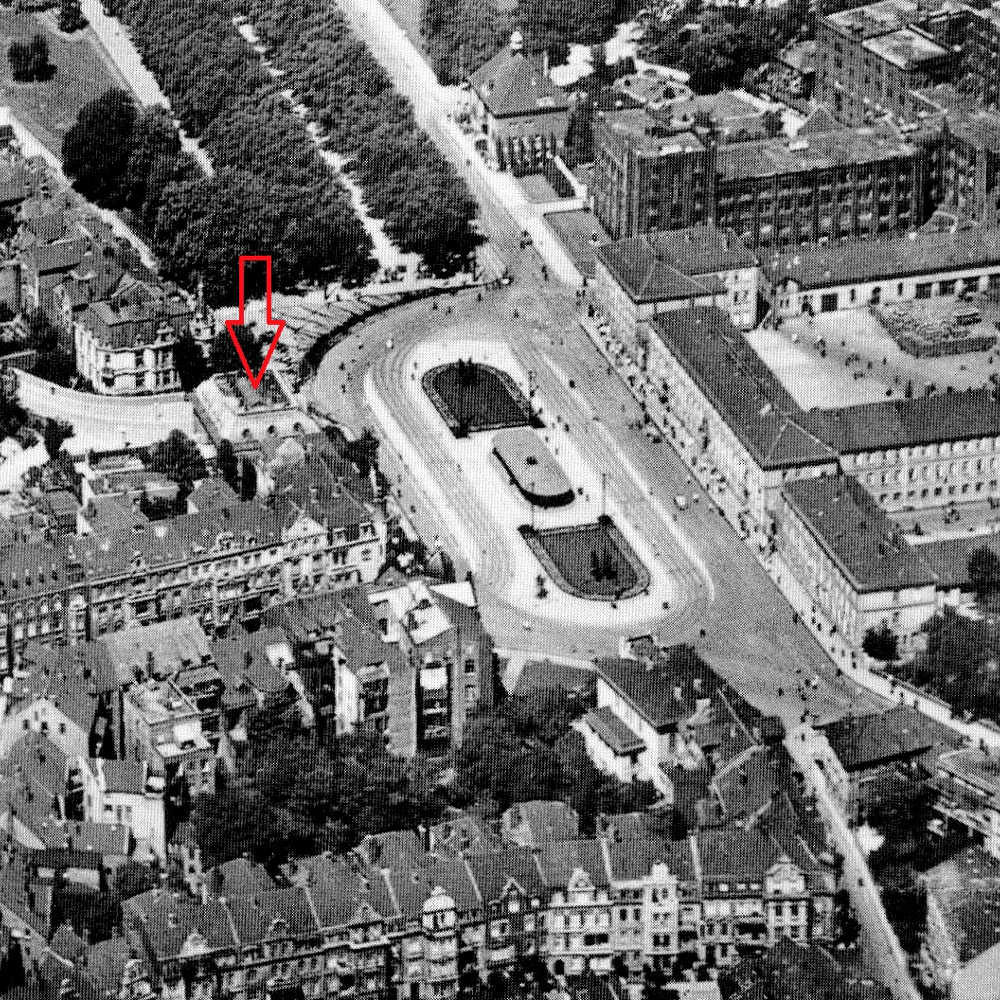
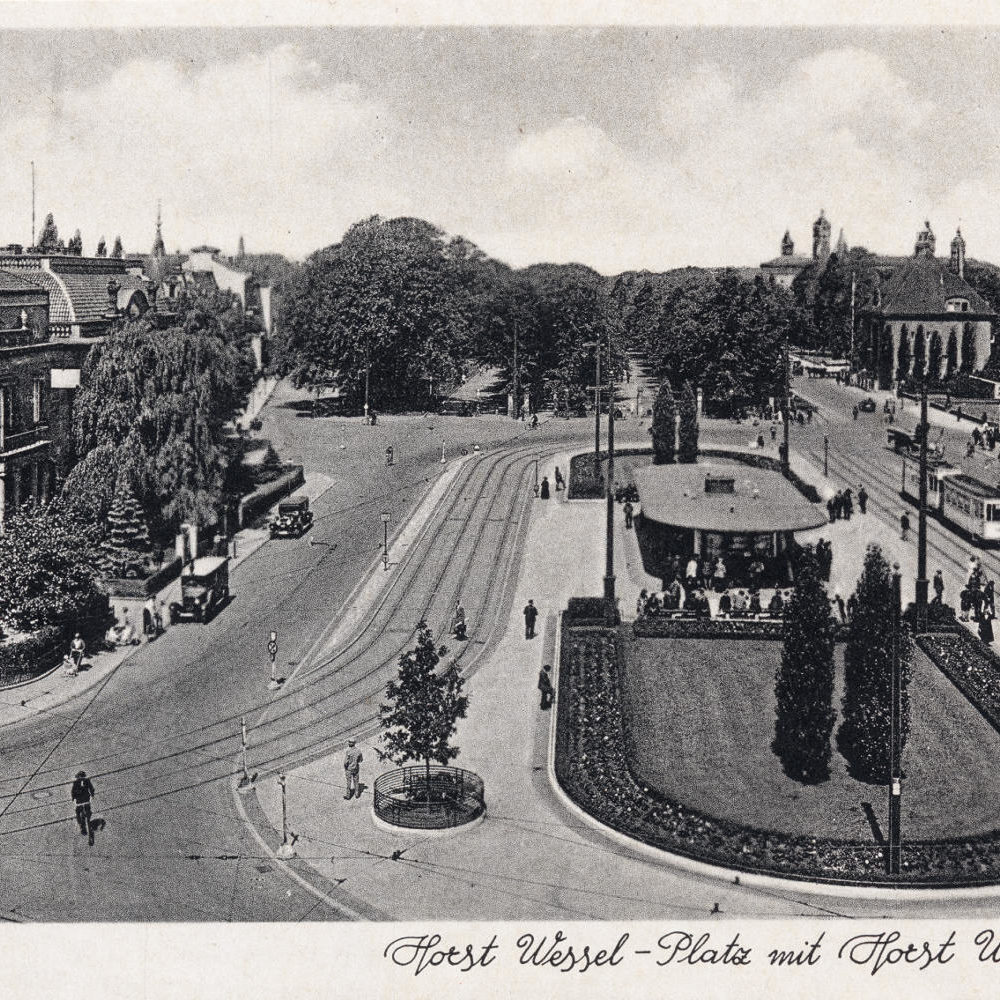
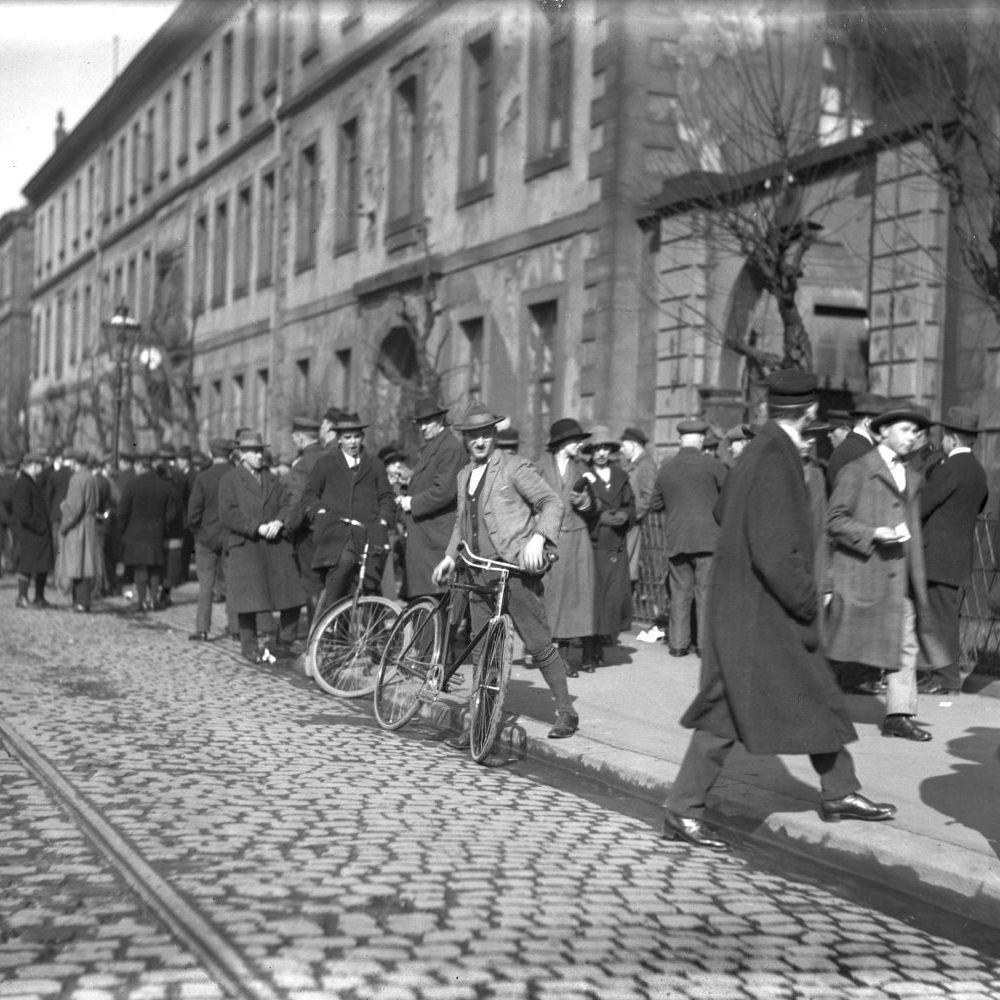
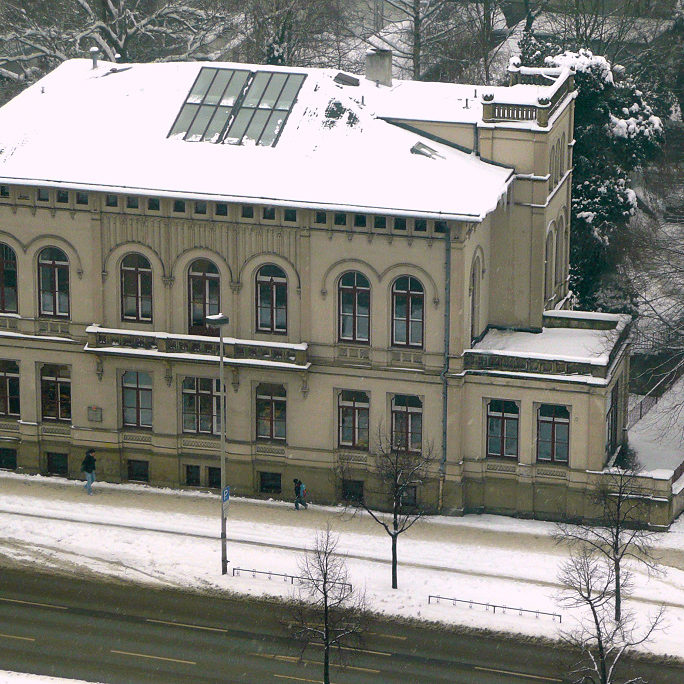
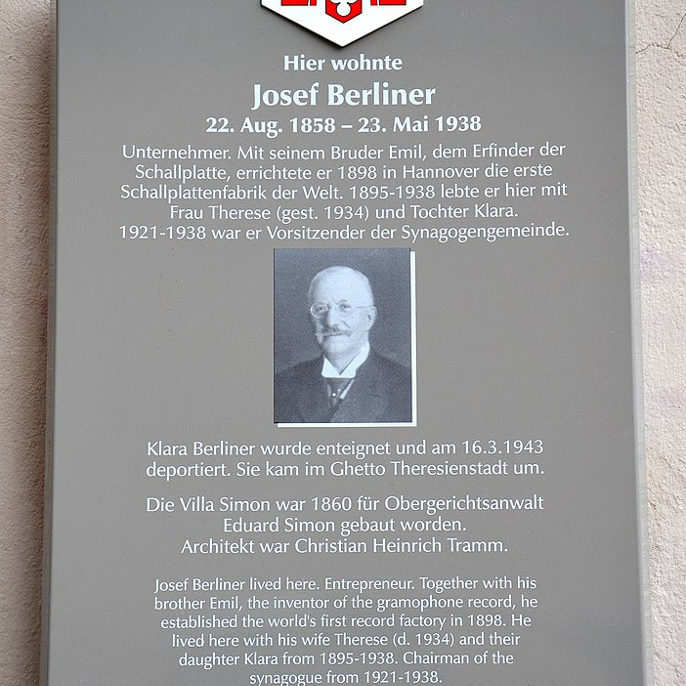
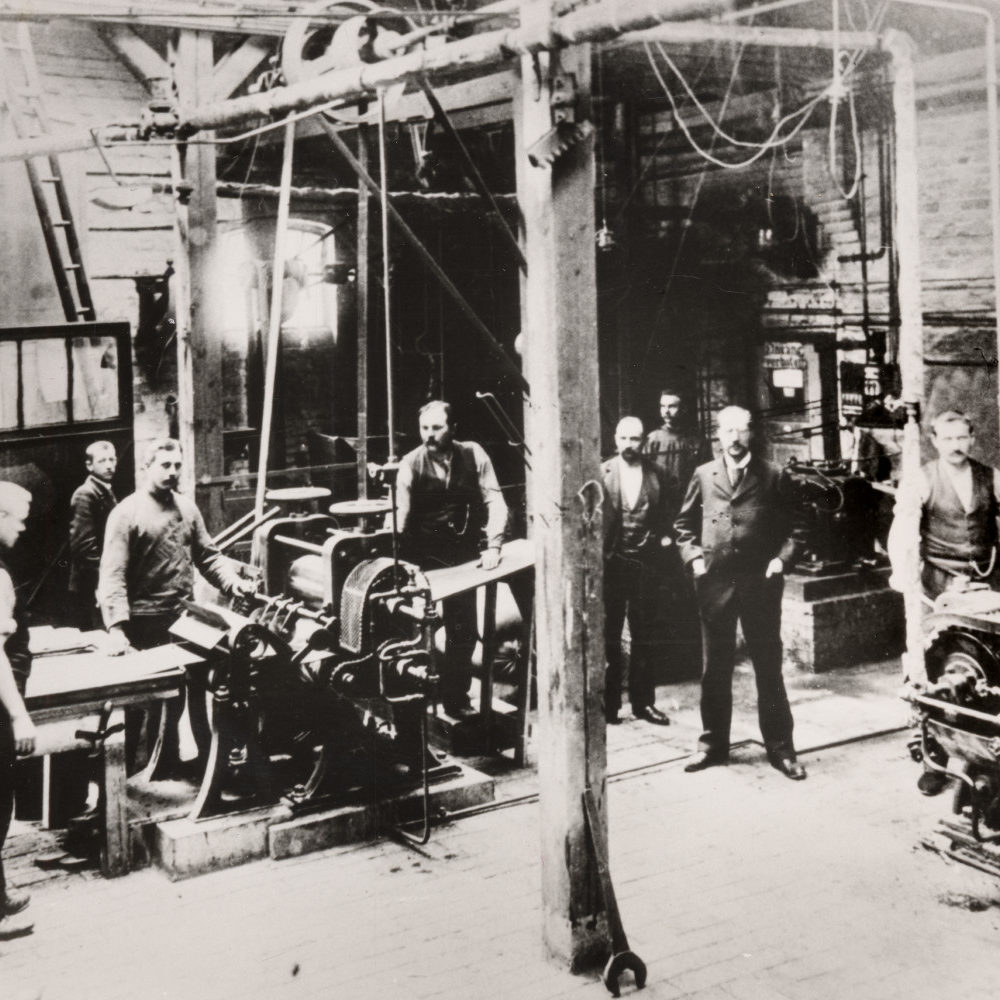
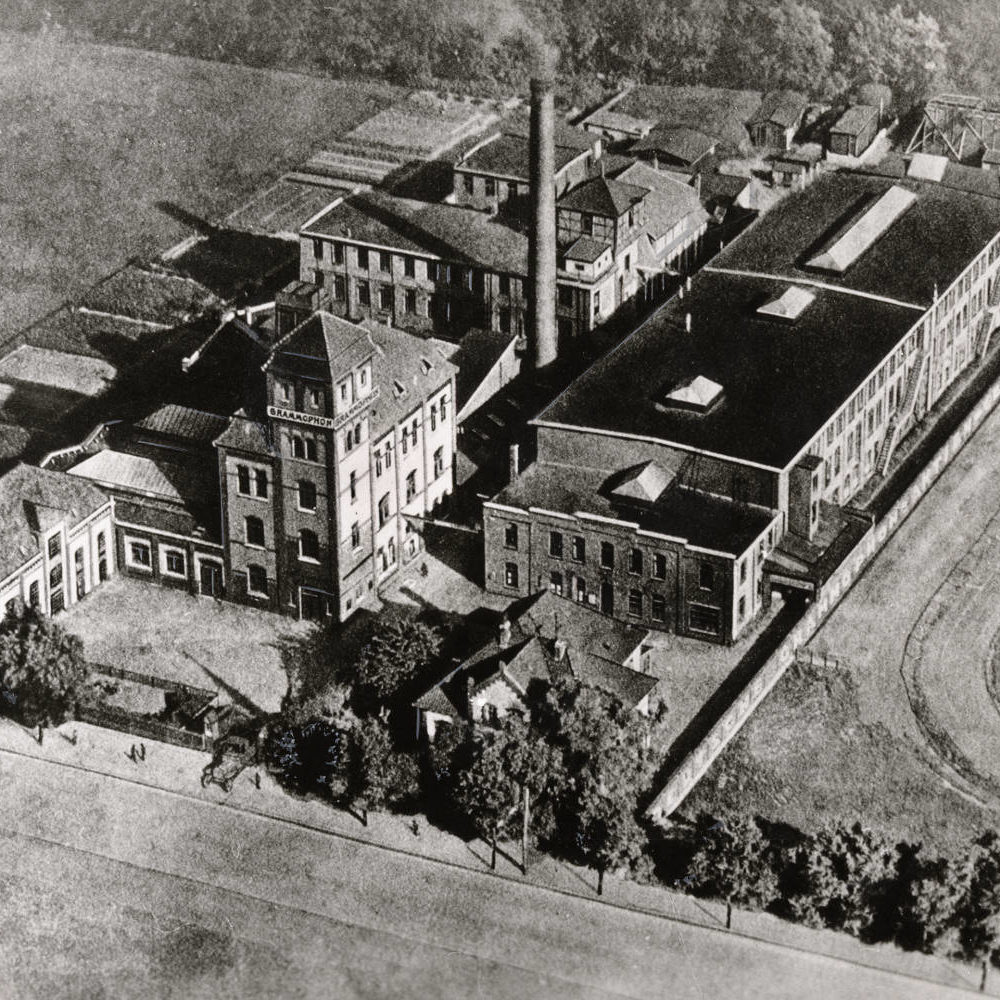
![Hanover: The Hackethal wire and cable works founded by the brothers Emil, Jacob and Josef Berliner on Vahrenwalder Strasse, next to the water tower, aerial photograph from ca. 1917. From: “Fliegerabteilung” [“Aviation Division”] photoalbum Historical Museum of Hanover](https://zukunft-heisst-erinnern.de/wp-content/uploads/2020/03/königsworther_platz_8-1000x1000.jpg)
![Hanover: After Hitler's appointment as Reich Chancellor but before totalitarian rule: members of the National Socialist Motor Corps (NSKK) march through Nienburger Strasse towards Königsworther Platz, with the junction of Parkstrasse (now Wilhelm-Busch-Strasse) in the background. The fraternity building on the right of the picture is still there today. Photograph from the estate of SA-Sanitäts-Sturmführer [SA medical storm leader] Dr.med. Ulrich G. Werner Heine Collection in Hanover City Archives](https://zukunft-heisst-erinnern.de/wp-content/uploads/2020/04/SA.-1000x1000.jpg)
![Hanover: Horst-Wessel-Platz (before 1933 and after 1945: Königsworther Platz) with Nazi propaganda pillar, undated (1930s/1940s). The view straight ahead shows Strasse der SA ["SA Street"] (before 1933 and after 1945: Lange Laube), with a cropped view of Villa Simon on Brühlstrasse on the right. Historical Museum of Hanover](https://zukunft-heisst-erinnern.de/wp-content/uploads/2020/03/königsworther_platz_9-1000x1000.jpg)
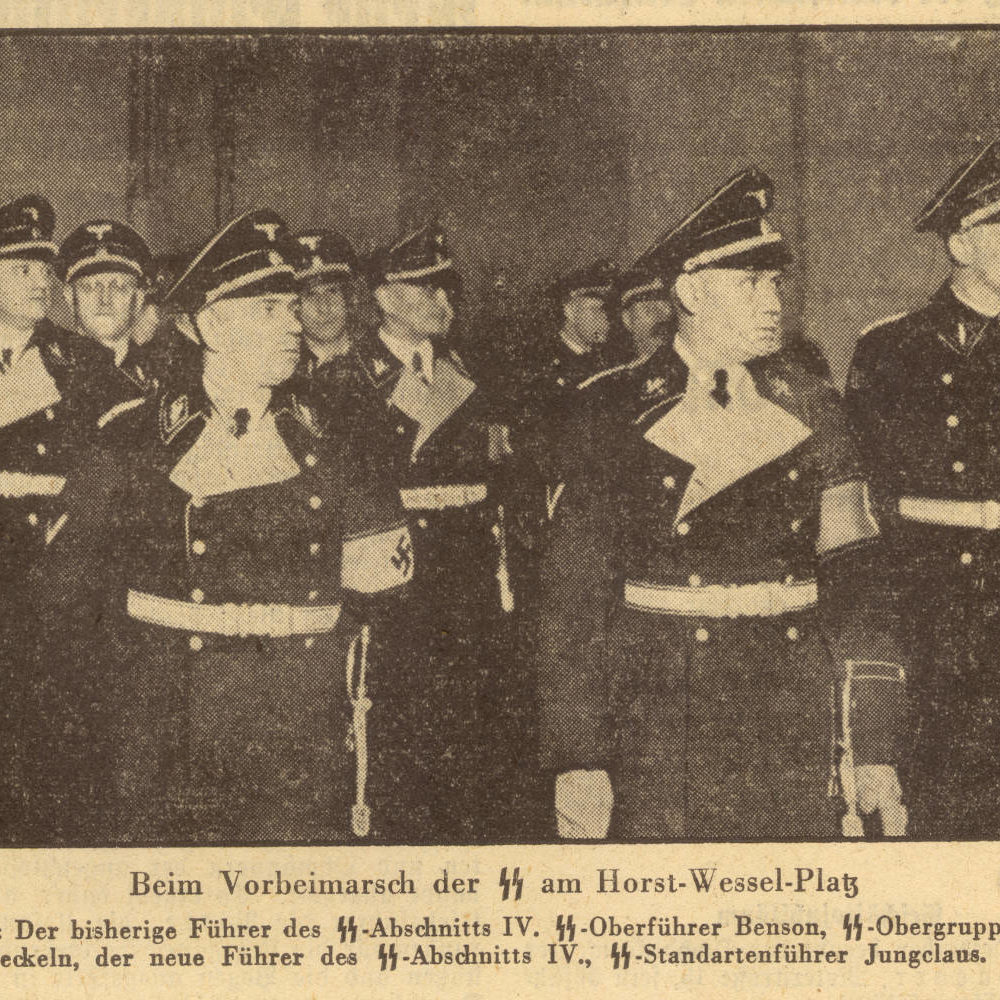
![The Master Race in Eastern Europe: German officers arriving at Riga railway station, 15 February 1944, including SA-Obergruppenführer [senior group leader] and Reichskommissar Ostland [Imperial Commissioner of the Occupied Eastern Territories (Baltic area)] Hinrich Lohse (3rd from left) and General der Polizei [General of the Police] and SS-Obergruppenführer Friedrich Jeckeln (5th from left). Image from the German Federal Archives 146-1970-043-42. Wikimedia Commons](https://zukunft-heisst-erinnern.de/wp-content/uploads/2020/03/königsworther_platz_11-579x579.jpg)
